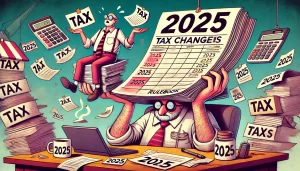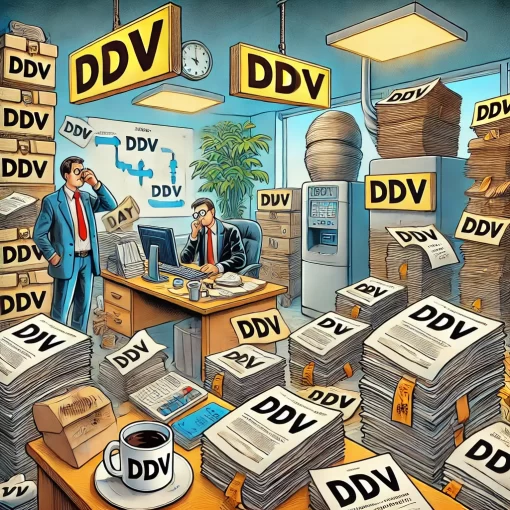The year 2025 brings significant tax changes for standardized taxpayers, affecting both full-time and part-time sole proprietors. These changes will be crucial for all entrepreneurs operating under the standardized expense system.
Changes for Full-Time Sole Proprietors
Standardized Expenses and Effective Tax Rate
- Revenue up to €60,000: 80% of standardized expenses are recognized, resulting in an effective tax rate of 4%.
- Higher VAT system entry threshold: Increased from €50,000 to €60,000.
Changes for Part-Time Sole Proprietors
Standardized Expenses and Effective Tax Rate
- Revenue up to €12,500: 80% of standardized expenses are recognized, resulting in an effective tax rate of 4%.
- Revenue between €12,500 and €30,000: 40% of standardized expenses are recognized, resulting in an effective tax rate of 12%.
- Revenue above €30,000: No expenses are recognized, and the effective tax rate is 20%. (Part-time sole proprietors cannot exceed this threshold, as they would lose their standardized taxpayer status.)
Differences Between 2024 and 2025
For Full-Time Sole Proprietors:
- Higher threshold for recognizing 80% standardized expenses (from €50,000 to €60,000).
- More favorable conditions for standardized taxpayers with higher revenues.
For Part-Time Sole Proprietors:
- Introduction of a graduated system for standardized expenses based on revenue.
- Stricter conditions for standardized taxpayers with higher revenues. In 2024, more favorable conditions applied to revenues between €12,500 and €50,000, but this range is now reduced to €12,500 to €30,000.
Difference Between Part-Time and Full-Time Sole Proprietors
Part-Time Sole Proprietor:
- Intended for individuals already employed full-time by another employer.
- Social security contributions are lower since they are already covered by the regular employment.
- Revenue threshold for standardized taxpayers: €30,000 per year.
Full-Time Sole Proprietor:
- Intended for self-employed individuals who conduct their main activity as sole proprietors.
- Social security contributions are higher, as they cover the entrepreneur’s full insurance.
- Revenue threshold for standardized taxpayers: €60,000 per year.
Key Difference: The amount of social security contributions and the allowed revenue for maintaining standardized taxpayer status.
Transition Period
A transition period has been introduced to facilitate adaptation to the new system:
- Year 2025: Exit conditions remain the same as before.
- Year 2026: Exit conditions will be evaluated under the new criteria, taking 2025 revenues into account.
Existing Exit Conditions for 2025
- Annual Revenue: If a taxpayer exceeds an average revenue of €150,000 over two consecutive years, they must exit the standardized taxpayer system.
- Related Parties: If more than 50% of a taxpayer’s revenue comes from transactions with related parties, they must exit the standardized taxpayer system.
These provisions remain in effect throughout 2025. In 2026, new exit conditions will apply, based on a two-year average revenue:
- €60,000: For taxpayers who have been mandatorily insured as self-employed full-time for at least nine consecutive months in the previous tax year.
- €30,000: For taxpayers who do not meet the above insurance requirement.
What Can You Do in 2025?
Entrepreneurs are advised to review their business operations and assess whether they will meet the criteria to remain in the standardized taxpayer system under the new rules. It is important to:
- Monitor revenue and business relationships with related parties.
- Adjust business strategies to the new thresholds and requirements.
For better understanding, consulting an expert such as an accountant or tax advisor is recommended.
Conclusion
The year 2025 provides a transition period to adapt to changes that will take effect in 2026. To avoid potential surprises, entrepreneurs are advised to adjust their business operations in a timely manner and seek professional assistance.


